Yes, we are back in Rochdale again – exploring the moors above the town to see what they will reveal to those who care enough to look. We’re staying at Fernhill Barn again, which is now in new ownership. The B&B is still very comfortable, although they no longer provide cooked breakfast. There is a kitchen for guests’ use, so this can help save money on eating out.
Anyway, first morning I didn’t fancy the breakfast on offer, so had more time in bed! I got by until lunch on a banana and a piece of flapjack. We went up to explore some more of Rooley Moor. The weather was quite cloudy and breezy, and the wind turbines were actually turning at last.
I think the turbines look rather majestic, especially when they’re turning. I know they are controversial, and blamed for spoiling beautiful views, but I think they look rather magnificent. I agree that we should be minimising our energy usage, rather than seeking new sources to satisfy our ever-increasing demands.
However, even with all the energy-saving that can be done (by industry, in the home and through improvements in the generation and storage of energy), I think we still need to capture a variety of renewable energy resources, and current efforts amount to a drop in the (thus far, largely untapped) ocean! I wonder how many people in Rochdale appreciate the wildlife of the moors and the threat posed to it by our continuing demand for energy and other resources.
I really enjoy being up on the moors at different times of the year – I get the opportunity to see the subtle changes in the landscape that result from the variety of wild flowers that thrive up here. I think the cotton grass looks particularly pretty.
It is always a strange experience being up here, in this wide open space, and thinking of the huge and busy urban centres below, and all those millions of people getting on with their daily lives, perhaps not thinking of the variety of wildlife and heritage almost on their doorstep. I must admit, if I lived in a high-rise block, my first concern might not be the wild flowers on the moors!
After a long hike around the moors (well, long for me!), we went to the Red Lion in Whitworth for a late lunch. We enjoyed staying here a few weeks ago, when they served excellent food, so we thought we’d come again and it’s still good. In the evening we returned to somewhere else we know well – the Raj Restaurant at 444 Edenfield Road. The curries here are just divine – for me deliciously mild, sweet and tasty, and for ethics boy stonkingly hot and firey!
It’s Saturday now, and the architecture in Lancashire seems to have a particularly severe presence, I suppose it has to be very hard-wearing to stand up to the elements – and when stone is what you’ve got, stone is what you build with! I like the stone-mullioned, leaded windows on this farmhouse on the moors (although I am not so sure about the modern wooden frames upstairs!).
This morning we went to Munchies Sandwich Bar for breakfast, where they will serve you any combination of cooked breakfast you desire (even vegetarian). It was simply deliciously cholesterol-busting and I don’t care a bit! After breakfast we made our way northwards once again to Todmorden – a delightful market town on the Lancashire / Yorkshire border. One of our favourite places to eat here is the Bear Co-op health food shop and cafe in Rochdale Road, which serves food so scrumptiously healthy it surely could counteract the worst cholesterol breakfast you can think of!
Inside, the cafe is just wonderful – so bright and airy from the huge window, books to read, flowers on the tables, a really nice place to be.
The shop front of the Bear Co-op is also very attractive, showing the original ‘Todmorden Industrial & Co-operative Society’ sign, and the ‘severe architecture’ that is typical of Lancashire.
By now it was late on Saturday afternoon, and we had to head home – the journey home always seems longer and more boring – though we could be glad that neither of us had to go to work in the morning!
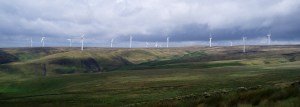

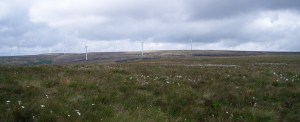

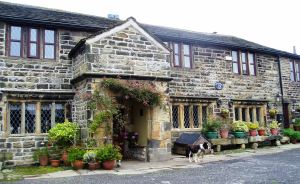

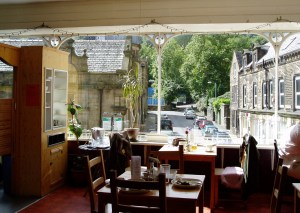
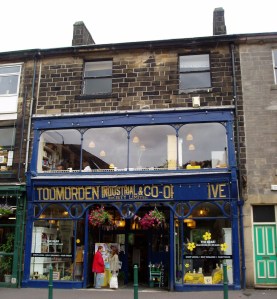

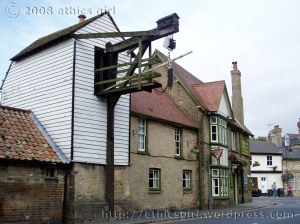

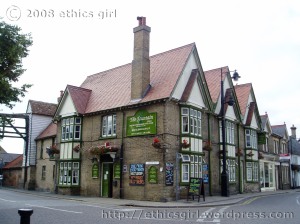
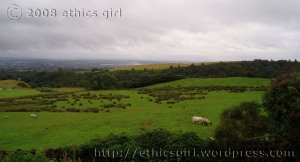
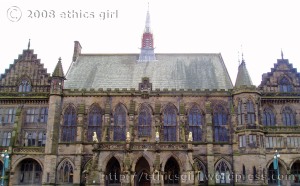
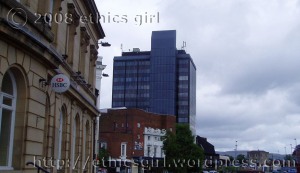
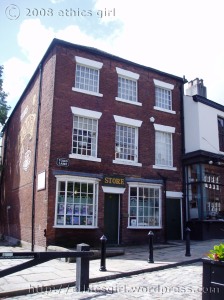
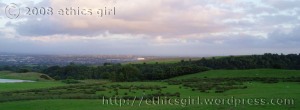
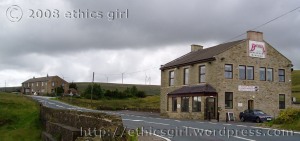





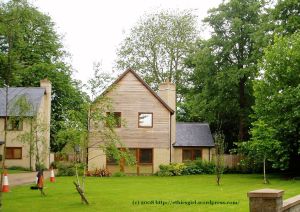
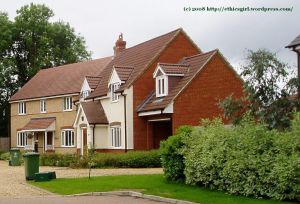

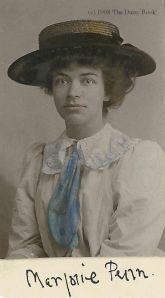

You must be logged in to post a comment.